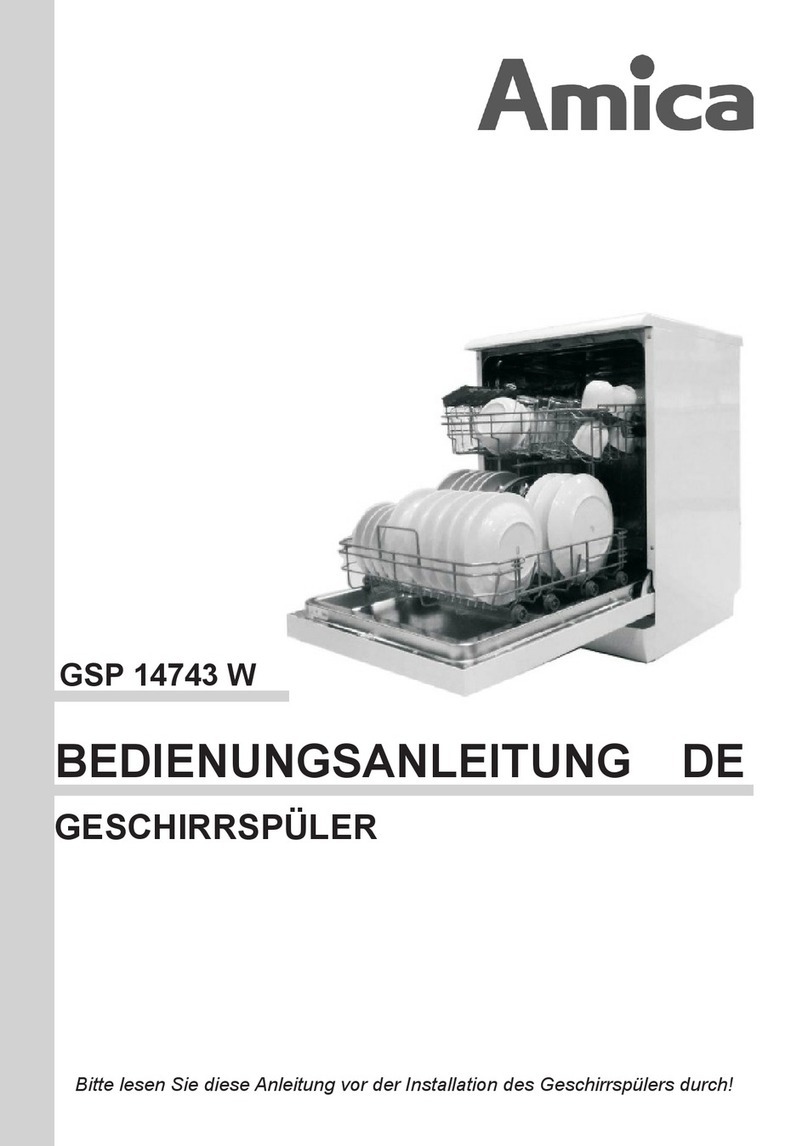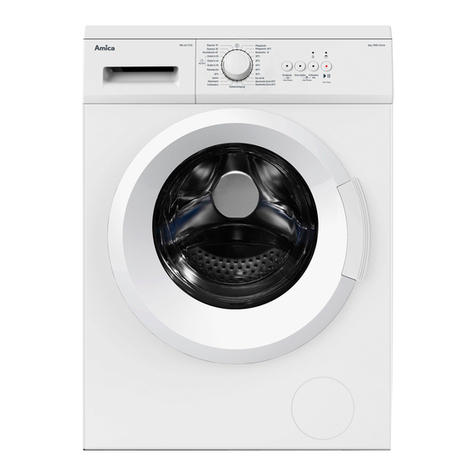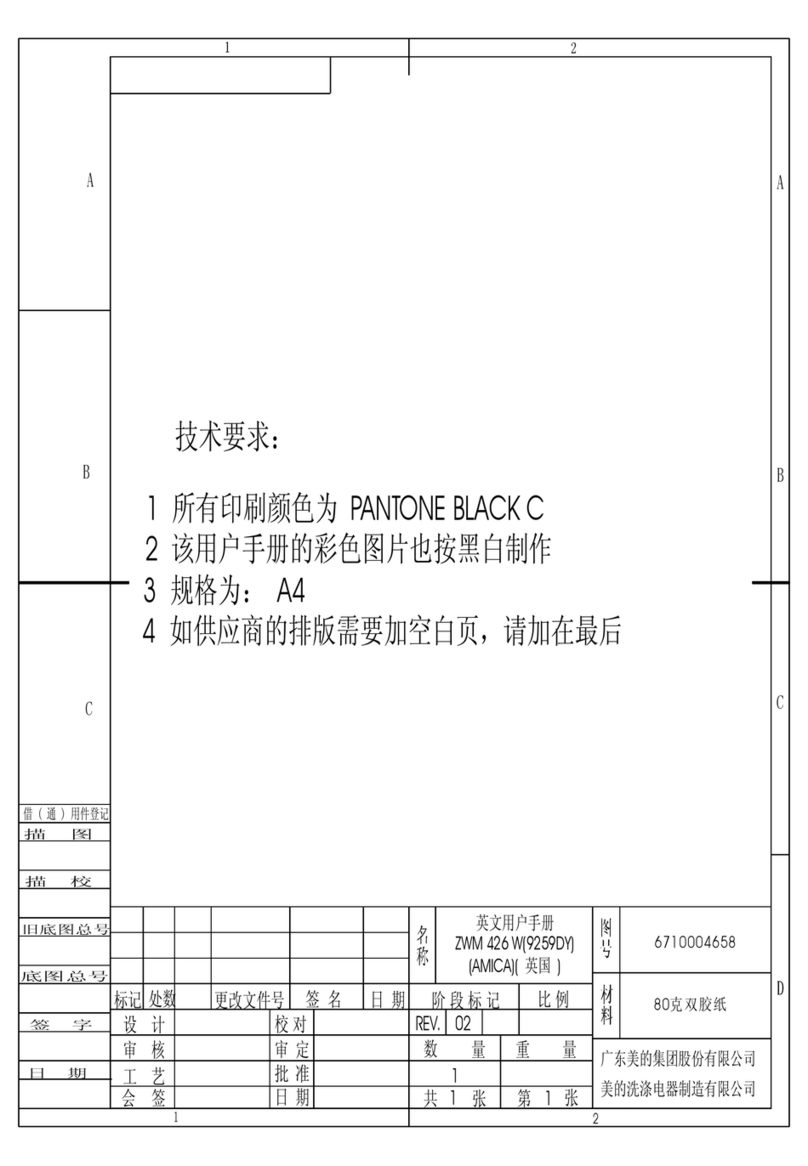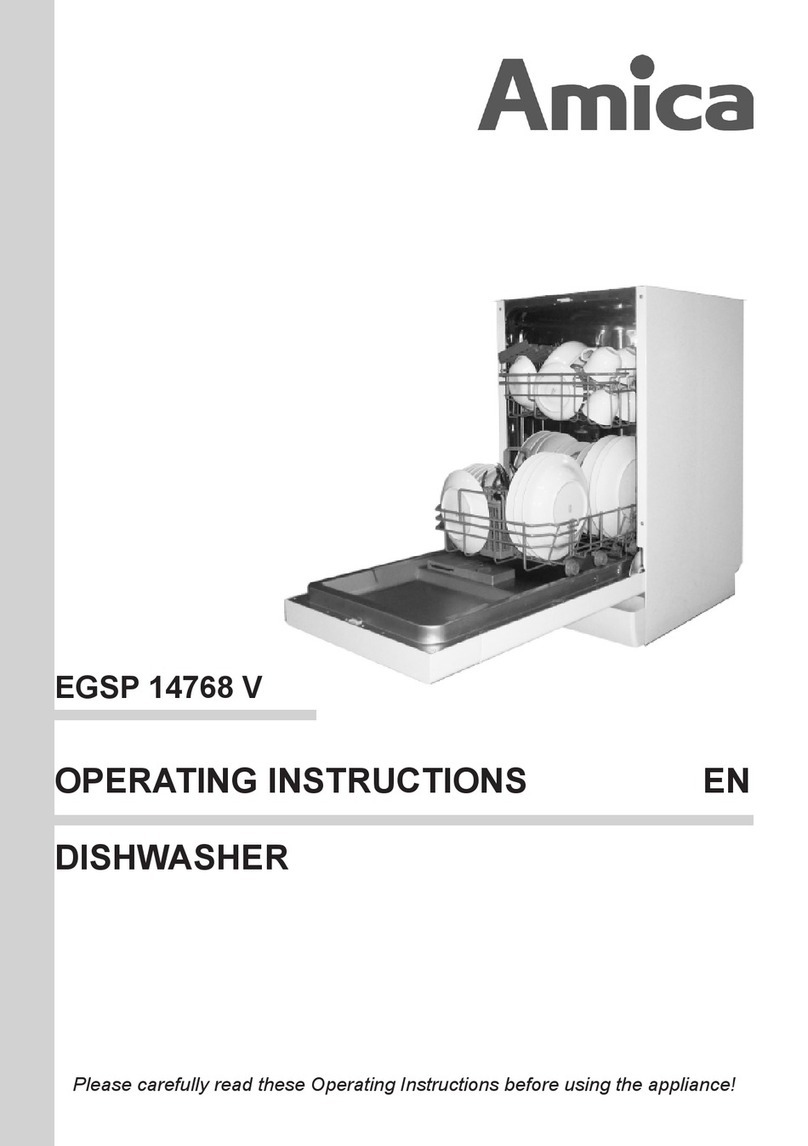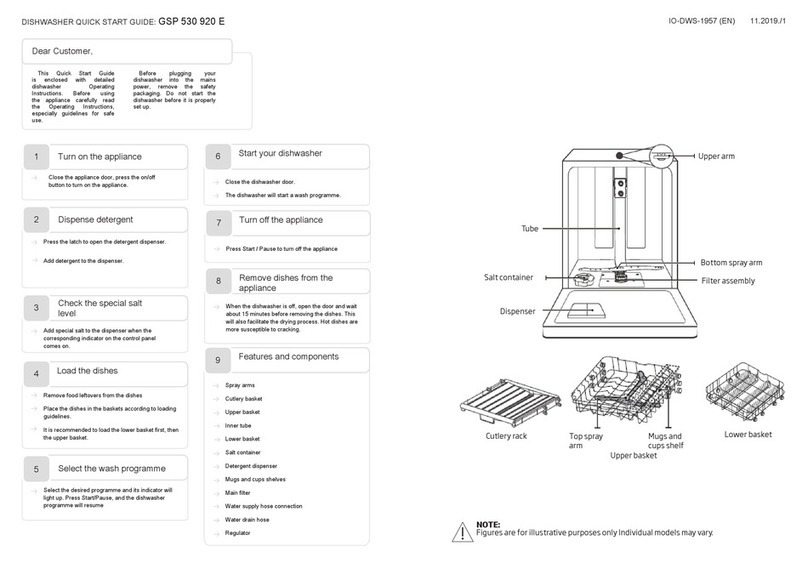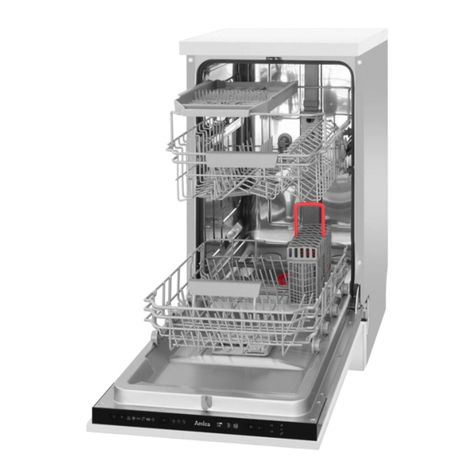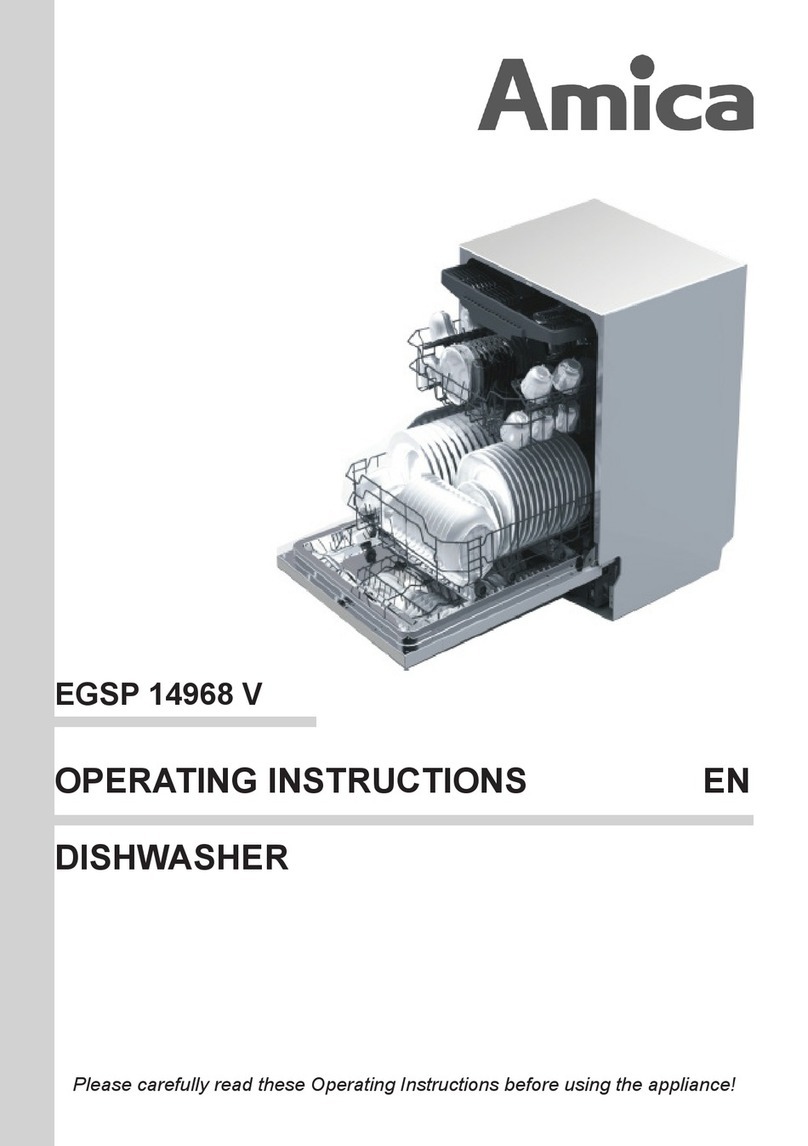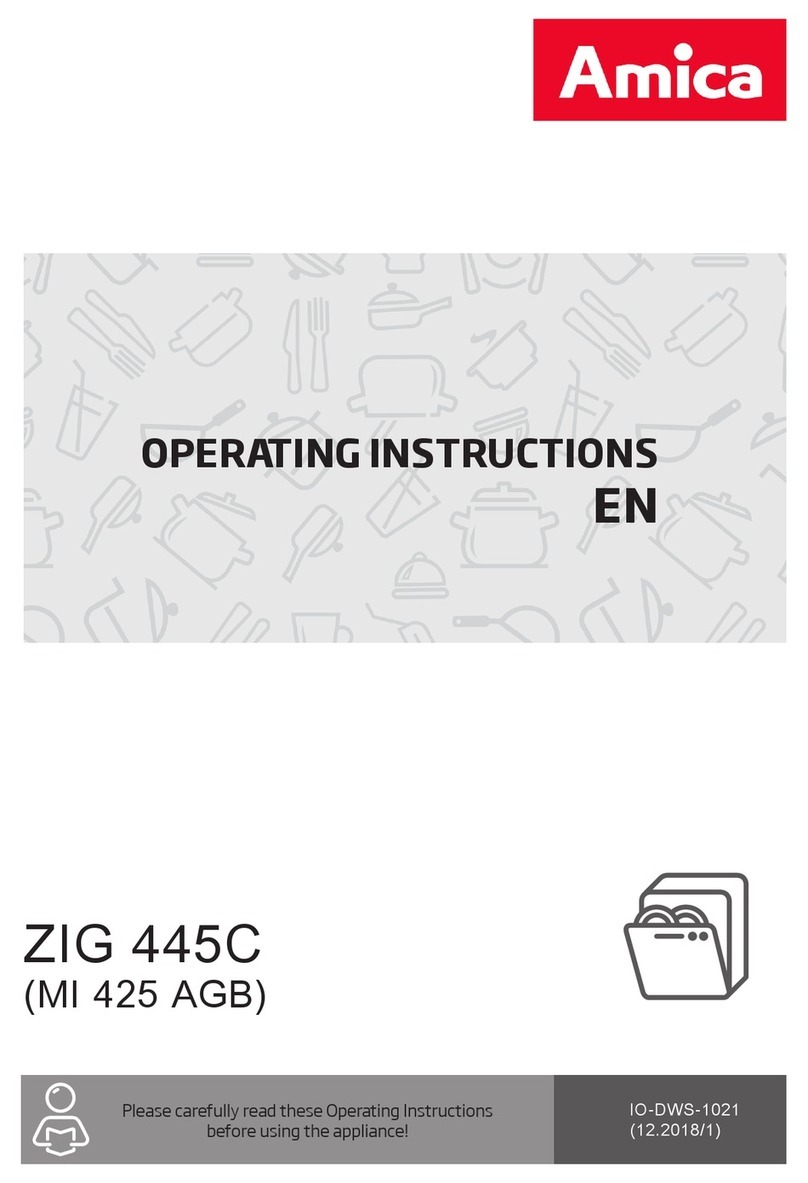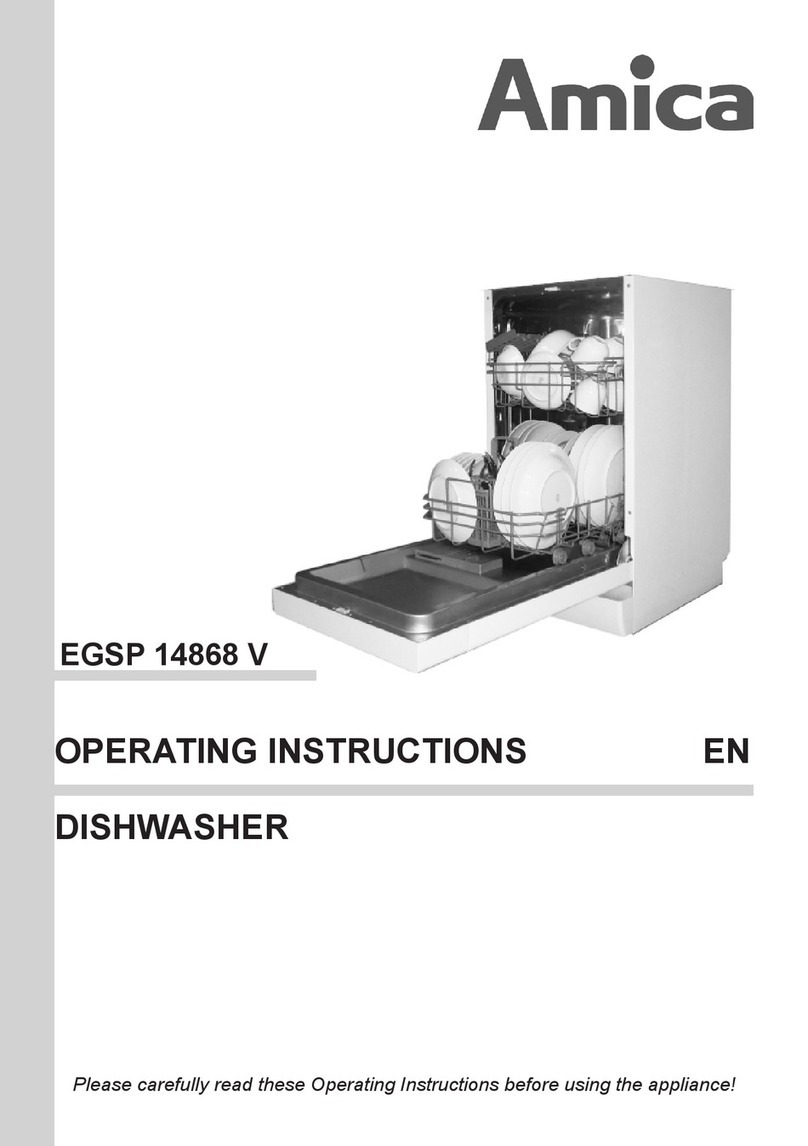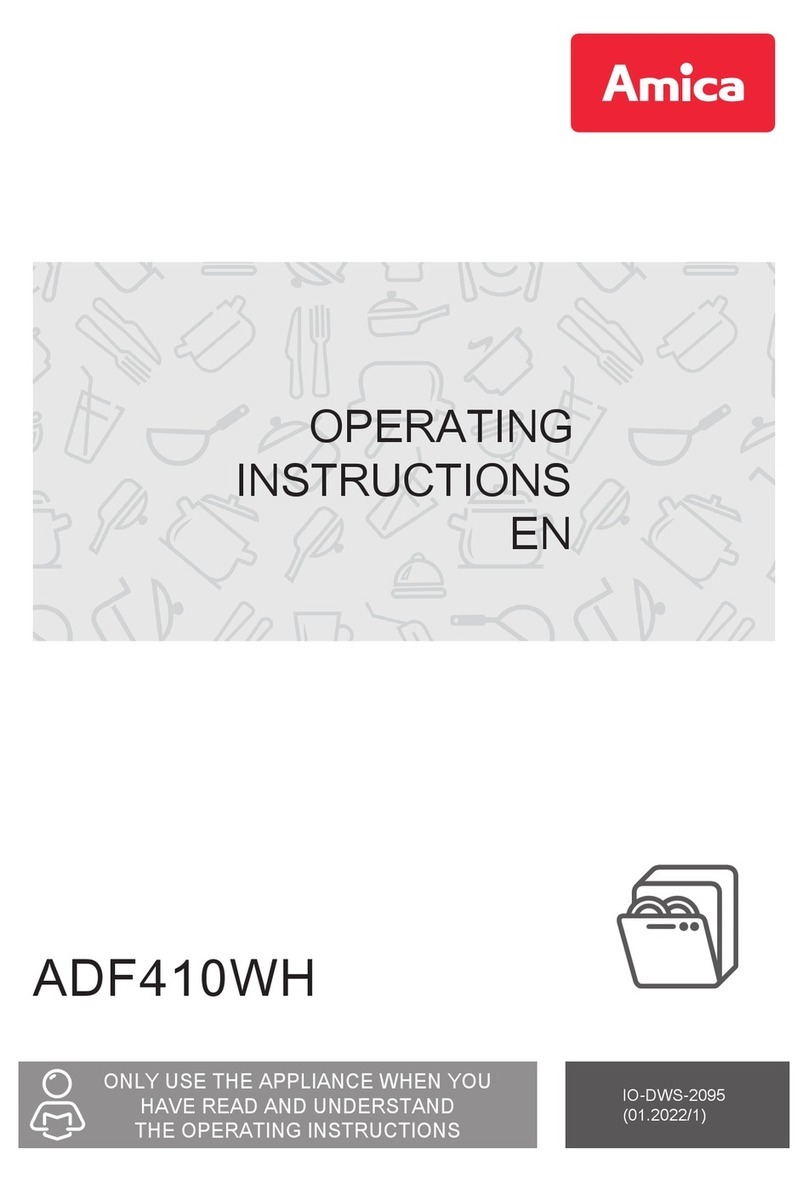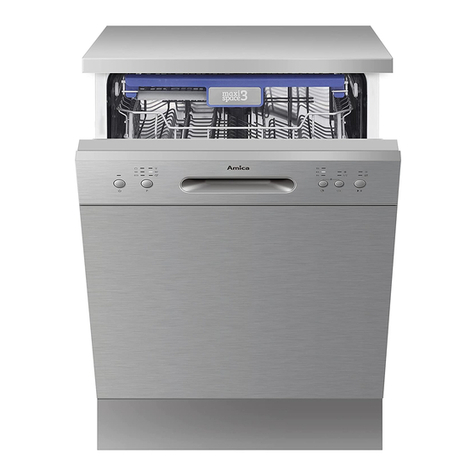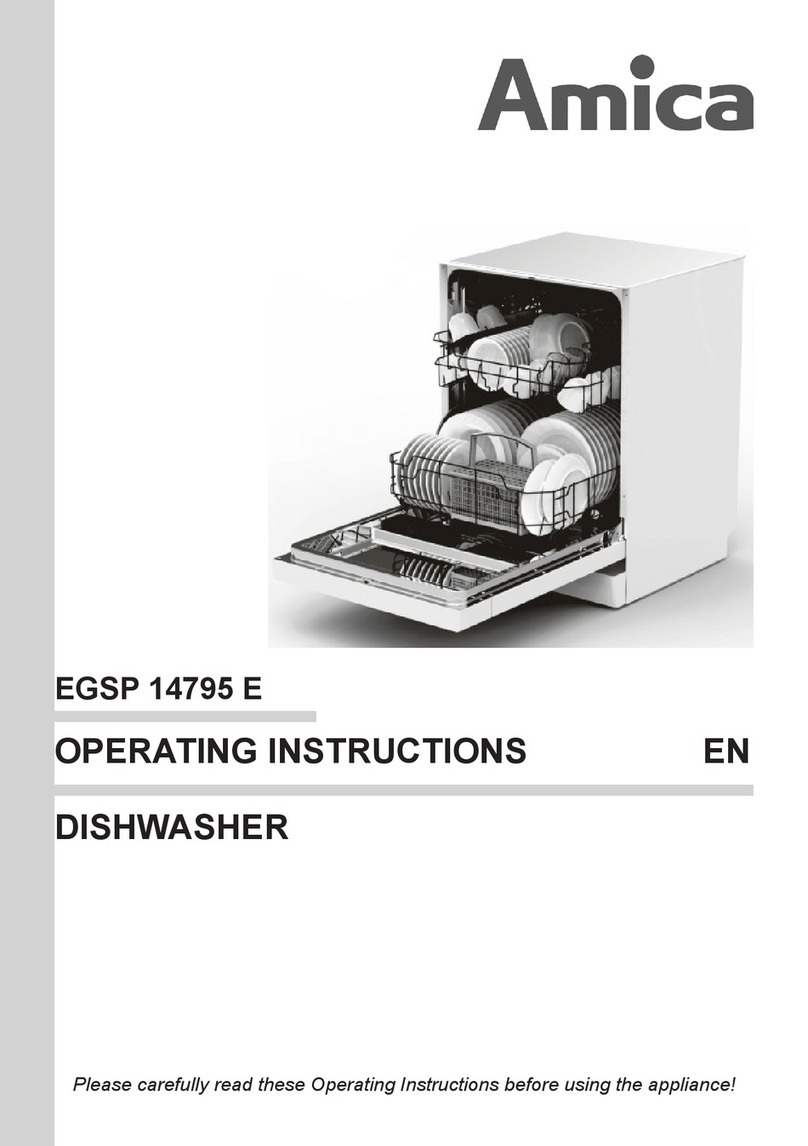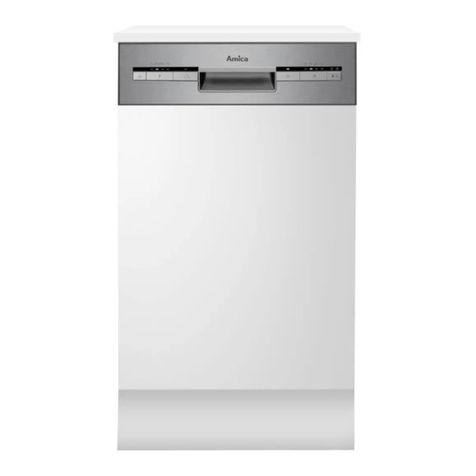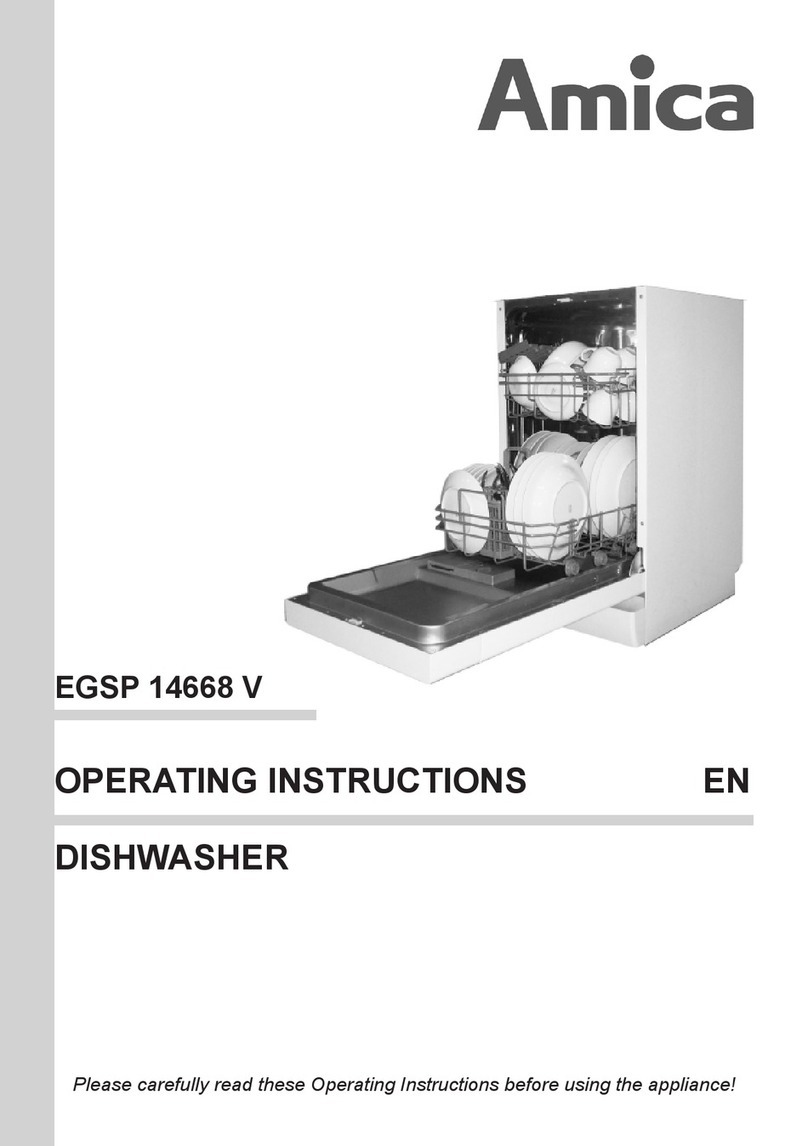
Always use salt intended for use with dishwasher.
The salt container is located beneath the lower rack and should be filled as follows:
Attention!
Only use salt specifically designed for use in dishwashers! All other typesof
salt not specifically designed for use in a dishwasher, especiallytable salt, will
damage the water softener. In case of damages caused by the use of unsuitable
salt the manufacturer does not give any warranty nor is liable for any caused
damages.
Only fill with salt just before starting one of the complete washing programmes.
This will prevent any grains of salt or salty water, which may have been split,
remaining of the bottom of the machine for any period of time, which may cause
corrosion.
After the first wash cycle the control panel light expires.
A Remove the lower basket and then unscrew and remove the cap from the salt container.
B If you are filling the container for the first time, fill 2/3 of its volume with water (around 500ml).
C Place the end of the funnel (supplied) into the hole and introduce about 1,2kg of salt. It is
Normal for a small amount of water to come out of the salt container.
D Carefully screw the cap back on.
E Usually, the salt warning light will be off in 2-6 after the salt container be filled with salt.days
NOTE:
Rinse aid is automatically added during the last rinse, ensuring thorough rinsing, and spot
andstreakfreedrying.
Only use branded rinse aid for dishwasher. Never fill the rinse aid dispenser with any
other substances (e.g. dishwasher cleaning agent, liquid detergent). This would damage
the appliance.
5
The salt container must be refilled when the salt warning light in the control panel comes on.1.
Though the salt container is filled enough, the indicator light may not black out
before the salt fully dissolve.
If there is no salt warning light in the control panel (for some models) , you can judge when to load
the salt into the softener by the cycles that the dishwasher had run (see the following schema ).
2. Iftherearespillsofthesalt,asoakprogramcouldberuntowipethemout.
